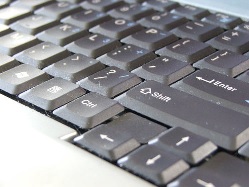Unsurprisingly there is evidence that students with good IT skills perform better at online writing exercises. One study in 2006 of school pupils found that hands on experience was strongly linked to online writing performance - computer familiarity added as much as 10% to their final scores.1
A recent survey stated that although 85% of schools think it is a good idea to teach pupils to type properly, only 15% deliver any typing training. Most of the 85% say that they lack the time, budget and expertise. This is despite the availability of high-quality online training programs that cost little and require no supervision.
If it were only the prospect of computer-based exams that made schools attach more importance to typing training, then you could perhaps understand why so few schools provide it at this particular moment. But the benefits are not confined to exam success.
According to BCS – the Chartered Institute for IT, a secondary school pupil spends on average three hours at a computer every school day. A pupil or student who can touch type can undertake the physical act of writing a report at about twice the speed of a student who types with two fingers, and at about three times the speed of a student who writes by hand. And the touch-typing pupil will save further time correcting mistakes that the two-finger typist only notices when they look up at the screen.
Furthermore, typed work is legible work. How much time do teachers waste trying to read pupils’ poor handwriting before they even decide on the quality of the content?
Not teaching children to type properly is like teaching them to read but not teaching them to write. We would never dream of telling a child to play the piano by using only two fingers. So why do we think this is OK when it comes to using a computer keyboard?
More and more parents are recognising that their children will have an advantage if they learn to touch type. It is a skill that, once learned, lasts a lifetime. And soon it could mean the difference between two exam grades. It’s now up to schools to respond and they must do so soon.


















